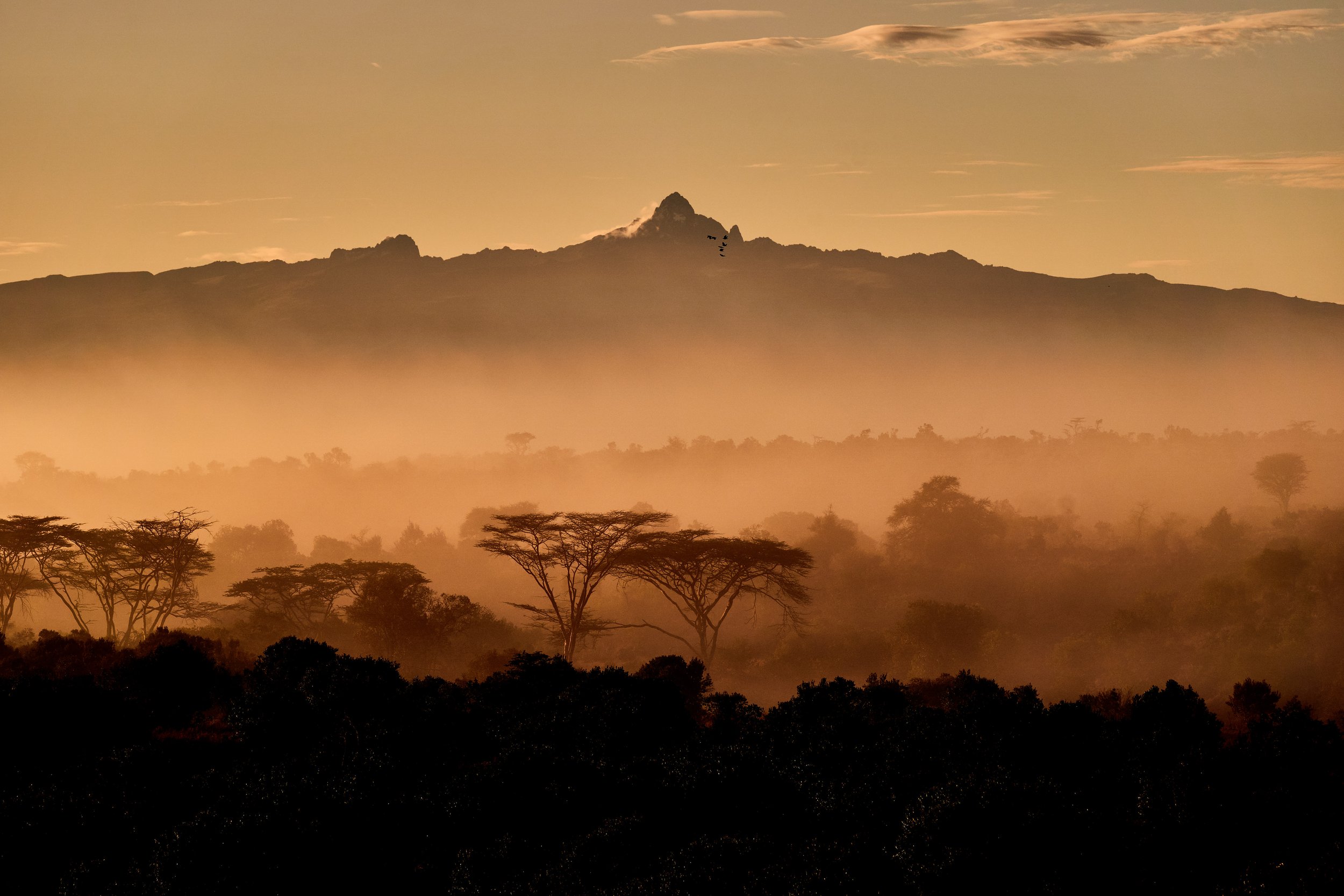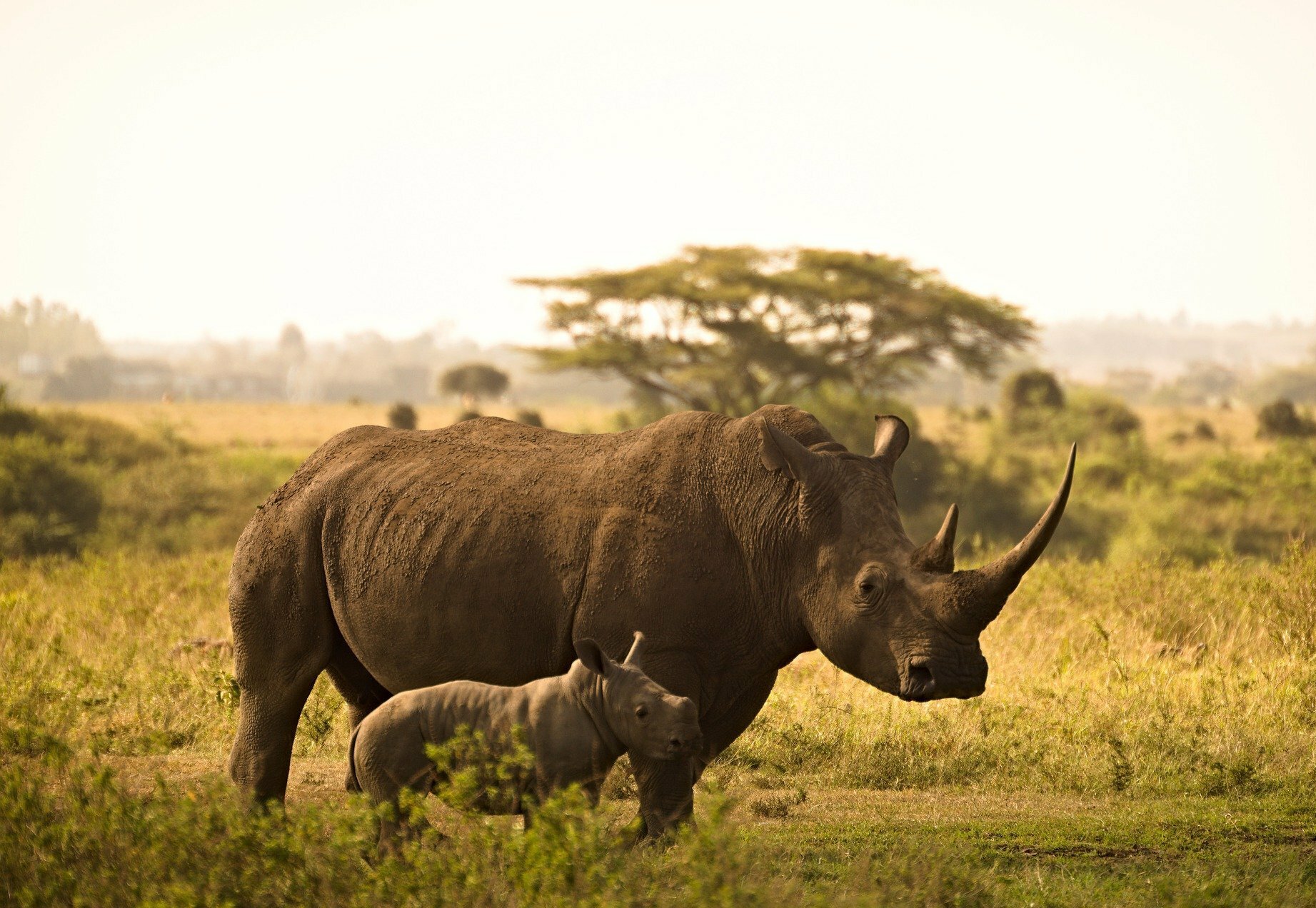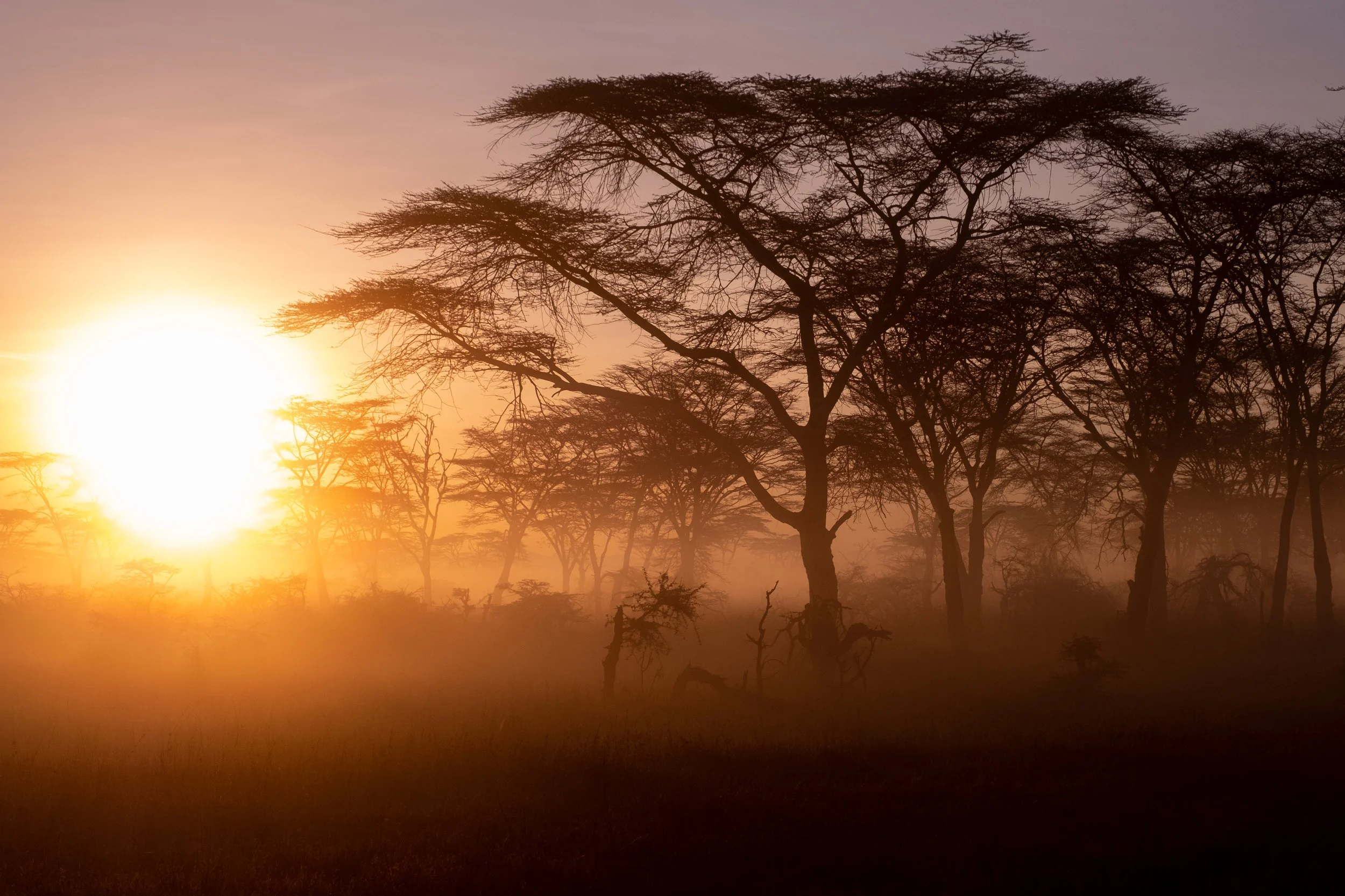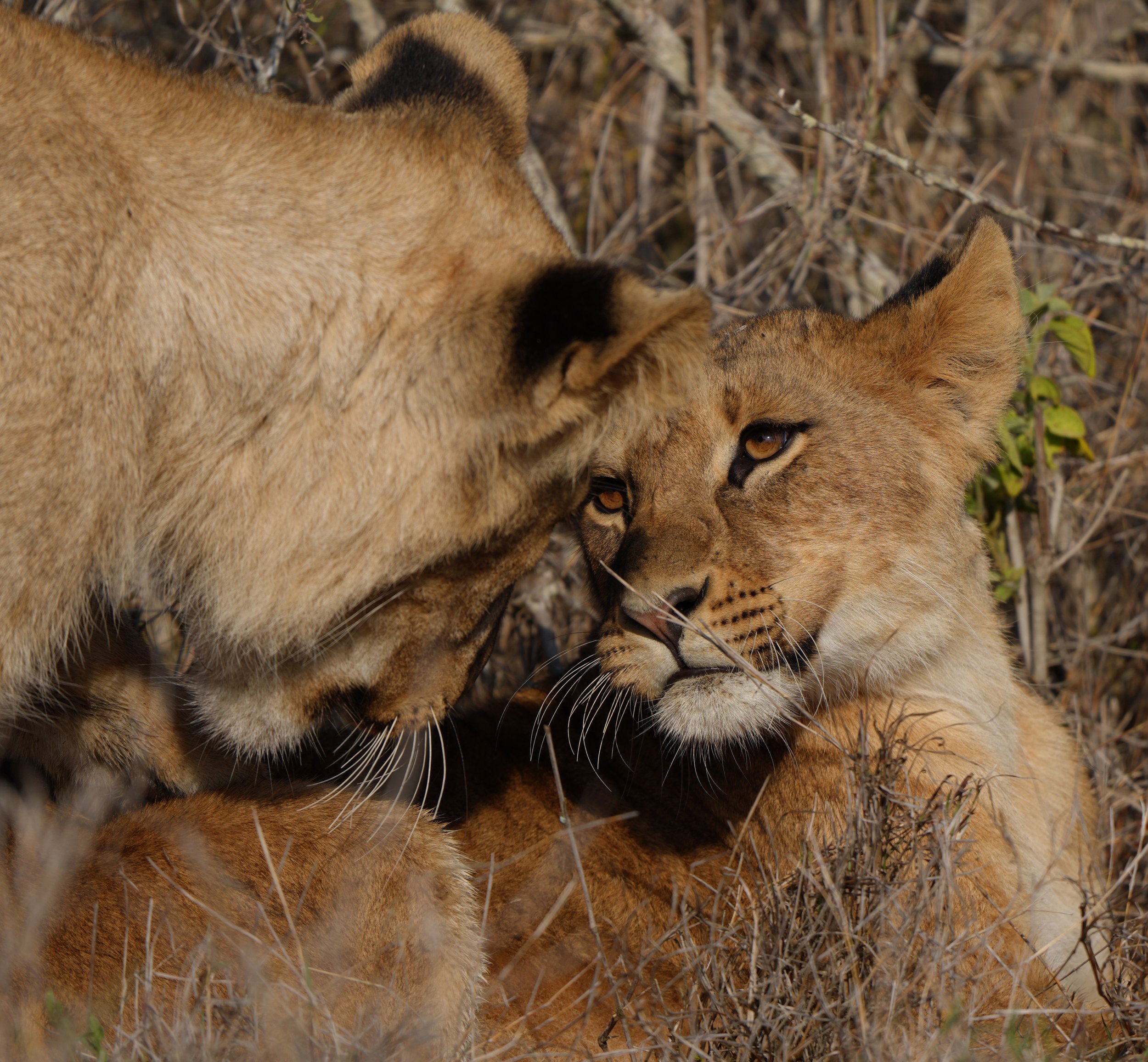
Help us return Rhinos to their ancestral home.

HERE & NOW.
Central Kenya is perfect rhino country and was once home to thousands of rhinos before the species was decimated. Over the last few decades, rhinos have been poached almost to the point of extinction.
Black Rhino populations have declined 96% over 20 years and are now classified as critically endangered.
Our plan is to remove boundaries and connect large landscapes together (preserving wildlife corridors) to create a huge, interconnected rhino habitat.
Positioned at the geographical heart of Kenya, the Segera Rhino Sanctuary will become a vital gateway to a large-scale initiative to create an interconnected area of private and community conservancies, government parks and formerly abandoned lands to become one of the largest rhino sanctuaries in the world as part of the Kenya Rhino Range Expansion Plan (KRRE), where rhinos can safely return to Central Kenya’s vast savannahs.
Protecting rhino is both incredibly intense – requiring highly trained and motivated rangers – and extremely expensive - but by joining forces and sharing expertise and resources, the idea is to reduce costs dramatically and create a financially viable and sustainable operating model for the long-term creating win-wins for communities, foster socio-economic development and preservation of biodiversity in line with the UN Sustainable Development Goals.

PHASE 1: Segera Rhino Sanctuary
Every step along the way is being meticulously identified. Social and economic requirements are treated with equal priority as the conservation goals, ensuring a holistic approach that will allow local communities to benefit.
In Central Kenya, a number of conservancies and parks have been recognized and assessed for rhino readiness. Segera Conservancy, which will be the founding conservancy of the new Rhino Sanctuary, is primed to receive rhinos. It also follows a sustainable enterprise model focused on strengthening rural economies, engaging communities and contributing to regional and national development, ensuring a safe, productive wildlife landscape through private sector leadership, collaboration and investment focused on building and enhancing social and natural capital in the region.
Local communities will be at the core of the rhino initiative, expanding opportunities for learning and employment, with women’s empowerment being at the forefront of conservation efforts and rhino conservation being supported by female ranger academy graduates, the first female Rhino ranger units in Kenya.
The ZEITZ foundation is also developing a new 4C Learning Centre alongside the rhino sanctuary, an educational facility serving both adults and children from rural communities in the area, with programs to learn about wildlife and conservation, providing opportunities for community members of all ages to go out into the field and experience initiatives themselves, inspiring Kenya’s next generation of conservation leaders.
Segera Rhino Sanctuary shall become a pride of Kenya and a source of national celebration, being recognized as an international trailblazer in conservation, highlighting a new way to preserve and conserve with culture and community being at the core.
The initial plan will be to form a new Rhino Sanctuary in the Segera Ward of Central Kenya, that in Phase 1 can grow to over 70,000 acres (Segera Conservancy, El Karama and Laikipia National Park), larger than the country of Singapore, and then connect with at least one existing rhino sanctuary (Ol Jogi) to create a 130,000 acre mega-sanctuary.
Figure 1: Depicts Segera Conservancy, El Karama and LNP, comprising Phase 1 of the Segera Rhino Sanctuary.

PHASE 2: Central Kenya region of the Kenya Rhino Range Expansion plan
Segera Conservancy is one of the most central conservancies in Kenya, and one of the last connected areas of biodiversity; sharing migratory corridors and boundaries with other important areas of wildlife habitat. Providing safe haven to some of the rarest and most endangered animals on the planet, Segera Conservancy has to be protected and sustained to survive long-term.
In Phase 2, an additional fund will be created to bring additional existing and new conservation and rhino areas into the vision and grow the connected Rhino Sanctuary up to 840,000 acres. This plan is embedded in the Kenya Rhino Expansion Plan (KRRE) for the central region of Kenya.
Both Black and White Rhino serve as “umbrella species” - meaning all other flora, fauna and wildlife living alongside them benefit from rhinos being protected in the same habitat. This vast new Rhino Sanctuary will create and safeguard a complete ecosystem for significant populations of rhino and other endangered species, a win-win for Kenya’s wildlife, communities and future.
Without Segera Conservancy, this vital area of biodiversity will be lost for the future, the land will degrade, and its wildlife will be lost forever.
Figure 2: Map demonstrating Segera Conservancy, El Karama and LNP’s critical location and ultimate vision to connect multiple conservancies and landscapes to create one of the world’s largest rhino sanctuaries (orange).
WE NEED YOUR HELP.
Nature is in danger, and we need to find urgent solutions, but rhino conservation is very expensive. To protect rhino from the constant risk of poaching requires a highly intensive and well-coordinated spectrum of protective assets.
The estimated average conservation cost per rhino (in a founder population) is around $25,000 per year, which is simply not sustainable. By creating a project of this scale, synergies with other conservancies and securing long-term support from philanthropic friends and businesses, we believe we can reduce this amount by more than half, to $10,000 per rhino per annum.
The size and scope of this conservation initiative will drastically reduce hard costs and increase impact, and by pooling resources we can make rhino conservation more manageable and more sustainable. What is different about this proposal is that we will be using already existing conservation areas (whose costs to date have already been funded privately), therefore the philanthropic funding requirement is much lower than starting from scratch.
The Kenyan Government and Kenya Wildlife Service (KWS) are fully committed to conservation initiatives and wildlife tourism in the country (the second largest income generator). This initiative will not only expand critical conservation areas for rhino, a necessity for the survival of Kenya’s biodiversity, but it will also act as a win-win for Kenya’s communities, promoting female empowerment through the employment of at least 50% women in security, land and wildlife management roles, driving economic progress and creating new conservation economies in line with the UN SDG’s.

SEGERA PHILOSOPHY
PARTNERSHIPS
The Association of Private and Community Land Rhino Sanctuaries (APLRS) is a membership association that represents the private and community landowners in Kenya who are custodians of rhinos on behalf of the state and under the direction of the Kenya Wildlife Service (KWS). Currently, APLRS constitutes eight of the 17 rhino conservation areas in Kenya (holding 64% of national rhino populations). This partnership approach to rhino conservation is certainly a key part of its success.
The Kenya Wildlife Service (KWS) conserves and manages wildlife in Kenya on behalf of the government, enforcing the necessary laws and regulations in all protected areas, while working with stakeholders and making certain that communities are engaged in, and benefit from, conservation efforts. They believe that: “if people benefit from wildlife and other natural resources, then they will take care of these resources.”
Kenya Rhino Range Expansion (KRRE)
As biodiversity in Kenya plummets (decreased by 68% in the last 40 years), agriculture and livestock have sky-rocketed, human population numbers are soaring and climate change becomes ever more apparent. Landscape-level conservation efforts need to incorporate other effective area-based conservation measures (OECMs) in order to accommodate these new challenges.
The APLRS survey in Laikipia distinguished five key strategic objectives that would make this project a success, while ensuring the needs and priorities of local people are met. These were replicable and scalable goals that can be applied to other conservation areas across Kenya:
● Biodiversity and Protected Area Conservation. Develop a restorative, secure and sustainable land management model that is adopted throughout Rhino Range Expansion membership with enhanced biodiversity as a measurable outcome.
● Socio-economic Sustainability in Laikipia County through the adoption of IUCN green listing and Social Assessments for Protected and Conserved Areas (SAPA assessments), to improve the equitability of governance and collaborative, effective management, alleviation of poverty and an empowered civil society.
● Security. Compulsory adherence to rhino site security criteria for all existing and new rhino sites within the RRE will inevitably require significant investment. Over time the project intends to work closely with government agencies and develop a coordinated approach to security within the region.
● Sustainable Financing that will enable program implementation.
OTHER BENEFITS
Tourism: This is one of Kenya’s major industries. In 2022, the travel and tourism sector contributed $2.13 billion (>10%) to Kenya’s Gross Domestic Product (GDP), with projections indicating a rise to $3.37 billion in 2023.
Security: The necessity of high-level security around valuable, vulnerable wildlife has a ripple effect on security wherever they are situated. National Police Reservists, engaged to help protect wild animals, boost police presence in often very remote areas.
Ecosystem Services: Natural resources need very careful management so that the integrity of water courses, water purity, soil health and carbon sequestration remain intact. The potential for carbon and biodiversity credits is significant, incentivizing the protection of wilderness areas.
Human/Wildlife Conflict: As soon as the competition for space, water and food becomes less intensified, people and animals will have less cause for conflict. Expansive, interconnected zones will also create better adaptability as climate uncertainty looms.
LAIKIPIA
Central Kenya has the second highest density of wildlife in Kenya, after the Masai Mara. It is one of only two counties in Kenya that has had an increase in wildlife populations since 1980, and this is thanks, in part, to its phenomenal network of community and private conservancies. Here, you can find 80% of its southern white rhino, its second largest elephant population, and more than 60% of the world’s Grevy’s zebra. Topography ranges from higher-altitude forests, riverine areas, low-land plains and rolling hills. The snow-capped Mount Kenya lies on one side, flanked on the other by the majestic Aberdare mountain range.
Segera Rhino Sanctuary’s central location makes it a vital component of Kenya’s Laikipia Rhino Range Expansion (LRRE) plan.
The local government is highly supportive of conservation efforts from both private and community conservancies. In total, 26 partners have been selected to be a part of this expansive, interconnected area, and Segera Conservancy, El Karama and Laikipia National Park are some of the first pieces of the puzzle. Segera Conservancy already has approval from KWS, and El Karama has completed the application process. Creating a win here will gain momentum for the entire project, generating the belief and the encouragement to really get it off the ground.

ONGOING INITIATIVES
The ZEITZ foundation focuses heavily on female education and empowerment, and in 2019 launched East Africa’s first ever All-Women Anti-Poaching Ranger training program and academy. The six months intensive training program was a huge success and was nationally celebrated. The academy has now graduated 2 cohorts of women rangers.
FEMALE RANGER PROGRAM
CANINE ANTI-POACHING UNIT
With our wildlife under constant threat, the ZEITZ foundation’s anti-poaching team are in action 24/7 to protect our precious wildlife. With 50,000 acres of land to cover, in addition to neighboring community land, one of the most accurate tools in tracking poachers on foot are the Canine K9 Unit.
The K9 team: Stevie, Mickey and Lindsey help us protect Segera Conservancy’s wildlife from poachers, as well as providing tracking services and community support for our local area and neighboring conservancies.
“THE TREE OF LIFE”
In 2020 The Zeitz Foundation launched the “Tree of Life’ reforestation project, with the aim of restoring natural, indigenous forests back onto the savannah after suffering mass deforestation in Kenya and devastating erosion as a result. With a total of 3 million indigenous tree species being planted over the next 10 years the conservancy is returning to an ecologically balanced natural paradise, while also recruiting the forest restoration teams from the surrounding communities.
Figure 3: Near-Future Projection of the “Tree of Life” reforestation project, comprised of over 1 million indigenous Acacia trees, being planted within and outside the rhino-shaped area.
About the ZEITZ foundation
In 2008, Jochen Zeitz founded the non-profit ZEITZ foundation to support sustainable projects promoting an inclusive, holistic paradigm of conservation that enhances livelihoods and fosters intercultural dialogue. Zeitz wanted to create conservation and culture-based ventures with the goal to not only “do less bad” but actively “do more good” and to have a net positive impact by being restorative for nature and allowing bio- and cultural diversity to be preserved. Educating over 1,800 children in Kenya, the ZEITZ foundation has built six schools awarded for their innovative eco-practices and rainwater harvesting. The ZEITZ foundation is also a strong believer in female empowerment and has been at the forefront of promoting a paradigm shift to support women. Established by the ZEITZ foundation, the SATUBO Beading Group empowers local women with their own business venture as well as promoting inter-tribal peace. In 2019, the ZEITZ foundation launched its first vocational training center, the All-Women Anti-Poaching Ranger Academy, breaking down the boundaries of a male-dominated industry. Two classes of female rangers have now graduated (and found employment) successfully, after completing intense recruitment and training programmes at the academy.
The 4Cs
At the time of its inception, the ZEITZ foundation launched a new philosophy on Segera known as ‘The 4Cs’ - comprising Conservation, Community, Culture and Commerce - which became the foundation of all of its initiatives, creating sustainable win-win scenarios for both nature and communities.
Initially created as a ZEITZ foundation initiative, The Long Run is a membership organization of nature-based tourism businesses that are committed to driving sustainability through the ZEITZ foundation’s holistic 4C philosophy. Now safeguarding over 23 million acres of nature in 22 different countries, touching the lives of 750,000 people and protecting over 30,000 plant and animal species, The Long Run has become the largest organization of its kind worldwide. With its successful 4C blueprint for creating sensitive, sustainable land, community and eco-tourism co-existence, Segera Conservancy was one of the founding Long Run Destinations.













